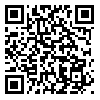
International Journal of Industrial Engineering & Production Research
Iran University of Science & Technology
Sun, Apr 6, 2025
[Archive]
Volume 24, Issue 2 (IJIEPR 2013)
IJIEPR 2013, 24(2): 101-106 |
Back to browse issues page
Download citation:
BibTeX | RIS | EndNote | Medlars | ProCite | Reference Manager | RefWorks
Send citation to:



BibTeX | RIS | EndNote | Medlars | ProCite | Reference Manager | RefWorks
Send citation to:
Yahyatabar Arabi A, Eshraghnia Jahromi A, Shabannataj M. Developing a new model for availability optimization applied to a series-parallel system (Quality Engineering Conference Paper). IJIEPR 2013; 24 (2) :101-106
URL: http://ijiepr.iust.ac.ir/article-1-505-en.html
URL: http://ijiepr.iust.ac.ir/article-1-505-en.html
1- MSc. student, Industrial Engineering,Sharif university of Technology,Iran, Tehran, Azadi Street, , aya6425@gmail.com
2- Associate Professor, Industrial Engineering,Sharif University of Technology, Iran, Tehran, Azadi Street,
3- MSc. student, Industrial Engineering,Shomal University, Iran, Amol, Haraz Street
2- Associate Professor, Industrial Engineering,Sharif University of Technology, Iran, Tehran, Azadi Street,
3- MSc. student, Industrial Engineering,Shomal University, Iran, Amol, Haraz Street
Abstract: (8844 Views)
Redundancy technique is known as a way to enhance the reliability and availability of non-reparable systems, but for repairable systems, another factor is getting prominent called as the number of maintenance resources. In this study, availability optimization of series-parallel systems is modelled by using Markovian process by which the number of maintenance resources is located into the objective model under constraints such as cost, weight, and volume. Due to complexity of the model as nonlinear programming , solving the model by commercial softwares is not possible, and a simple heuristic method called as simulated annealing is applied. Our main contribution in this study is related to the development of a new availability model considering a new decision variable called as the number of maintenance resources. A numerical simulation is solved and the results are shown to demonstrate the effecienct of the method.
Type of Study: Research |
Subject:
Quality Control
Received: 2013/01/28 | Accepted: 2013/06/17 | Published: 2013/06/17
Received: 2013/01/28 | Accepted: 2013/06/17 | Published: 2013/06/17
Send email to the article author
| Rights and permissions | |
 | This work is licensed under a Creative Commons Attribution-NonCommercial 4.0 International License. |



